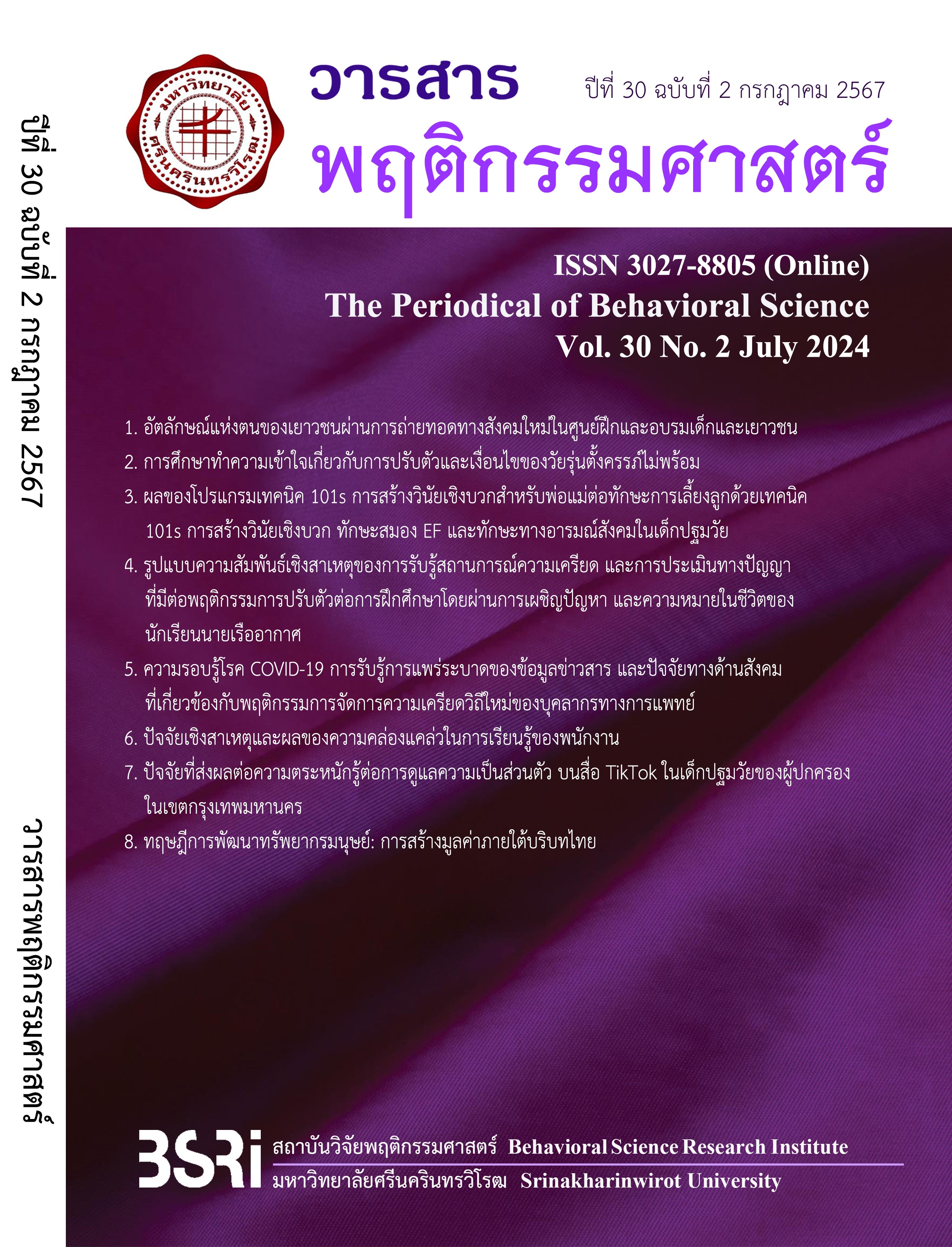The Identity of Juvenile Offenders via Resocialization in the Juvenile Vocational Training Center
Keywords:
Self-identity, resocialization, juvenile vocational training centerAbstract
The withdrawal of pre-existent identity and the enhancement of a new identity to the positive identity of juvenile offenders and resocialization. The objective of this research was to investigate the definition and conditions of identity formation among juvenile offenders in the Juvenile Vocational Training Center after obtaining resocialization. Researchers utilized qualitative case study and purposive sampling technique. participants were 4 professions and 6 juvenile offenders in the Juvenile Vocational Training Center. Data were collected through semi-structural in-depth interviews, and consequently analyzed via content analysis. The definition of identity formation of juvenile offenders can be divided into 2 characteristics: the creation of a new image of oneself and the purposeful change of identity. In addition, the conditions of juvenile offenders were divided into 2 domains: 1) the internal factors - which include a) lessons learned from the past that juveniles will reminisce about and b) the intrinsic motivation from friends – and 2) the external factors - which include a) moral support from family and b) trust and care from juvenile professions. Research findings can be applied to family and other related institutions to enhance identity formation and prepare juvenile offenders for their reintegration into society.
Downloads
References
Bandura, A., & Walters, R. H. (1963). Social learning and personality development. Holt Rinehart and Winston.
Becker, H. S. (1963). Outsiders: Studies in the Sociology of Deviance. Free Press.
Chaowata, K. (2015). Knowledge building for self-identity changes of miss-stepping children and youth. Srinakharinwirot Research and Development (Journal of Humanities and Social Sciences), 7(13), 1-15. https://so04.tci-thaijo.org/index.php/swurd/article/view/54505 [in Thai]
Cooley, C. H. (1902). Looking-glass self. The production of reality: Essays and readings on social interaction, 6, 126-128.
Crossman, A. (2019). Understanding critical theory. Thought Co. https://www.thoughtco.com/ashley-crossman-4705318
Department Juvenile Observation and Protection. (2020). Lawsuit report of 2563. https://shorturl.asia/c3wTl
Department Juvenile Observation and Protection. (2022). Lawsuit report of 2565. https://shorturl.asia/RK0Dw
Heitzmann, C. A., & Kaplan, R. M. (1988). Assessment of methods for measuring social support. Health psychology, 7(1), 75.
Juliana, J., & Mohamad, Z. S. (2023). Challenges in building positive self-concept in female adolescent offenders in juvenile detention centers in Tangerang, Indonesia. Humanities, Arts and Social Sciences Studies, 23(1), 104–113.
Kaewkerd, N. (2021). Mistaken behaviorals and the need for career for children and youths in juvenile vocational training centers for boys. NRRU Community Research Journal, 15(1), 223-235. [in Thai]
Kamolsuksatit, S. (2020). Juvenile repeat offenders guidelines for the prevention and correction of juvenile repeat offenders in an offense relating to drugs based on factors that predict the criminologist. Humanities and Social Sciences Nakhon Sawan Rajabhat University Academic Journal, 7(1), 1-19. [in Thai]
Kampangkaewand, C., & Sripa, K. (2022). The recidivism among juveniles involved in drug use: A case study of Ban Pranee Juvenile Vocational Training Center for girls. Royal Police Cadet Academy, 11(2), 139-154. [in Thai]
Maltseva, T. V., Malyshev, K. B., Sobolev, N. G., Kirillova, E. P., & Mikhailov, A. N. (2021). Basic model of resocialization of convicts. SHS Web of Conferences, EDP Sciences.
Maneethep, C. (2018). The effects of imprisonment on the characteristics related to the tendency to repeat criminal offenses by inmates [Doctoral dissertation]. National Institute of Development Administration. https://shorturl.asia/mUxX3
Podhisita, C. (2019). The science and art of qualitative research. Amarin Printing & Publishing. [in Thai]
Sumsiripong, P. (2018). Juvenile offender in narcotic cases. ARU Research Journal, 5(3), 24-30. [in Thai]
Thanombunchai, C. (2009). Good Child Discourse: A Case Study of the Ubekka Training Center [Doctoral dissertation]. Silpakorn University. https://shorturl.asia/f3NAd
Downloads
Published
How to Cite
Issue
Section
License
Copyright (c) 2024 The Periodical of Behavioral Science

This work is licensed under a Creative Commons Attribution-NonCommercial-NoDerivatives 4.0 International License.
Behavioral Science Research Institute, SWU
114 Sukhumvit 23, Bangkok 10110, Thailand.
Tel.02-649-5000 # 17600



